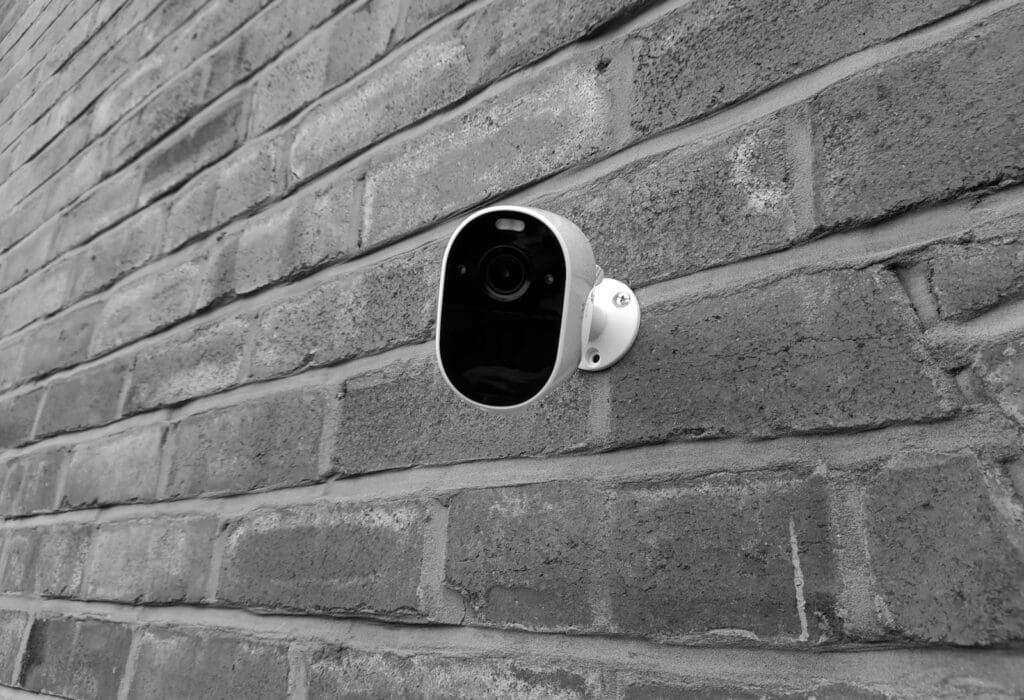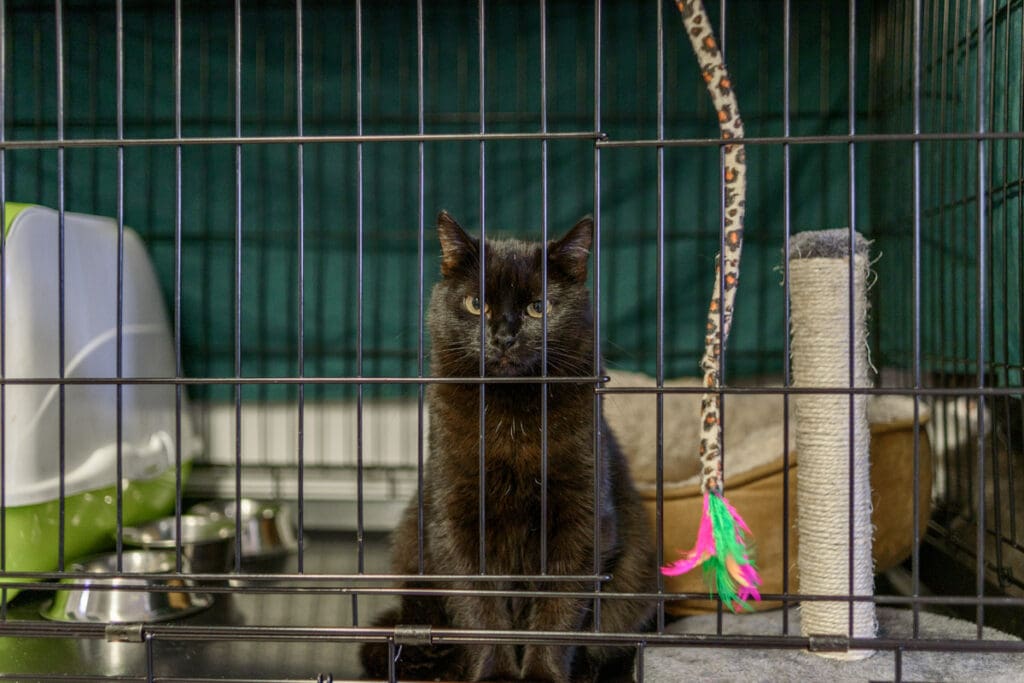Cats contain multitudes. They’re perfect predators, master escape artists, and amazing at hiding. All of this whips up into a perfect storm of anxiety for cat owners. Especially if they are supposed to stay indoors all the time. But you’re in luck! Today we’re talking about what to do if your cat runs away — and how to prevent it from happening again.
1. Stay Calm

Don’t panic. Panicking will prevent you from thinking clearly. If you cannot see your cat anywhere, stay calm. About 75% of lost cats are recovered, according to statistics from the National Institutes of Health (NIH).
2. Search Your Neighborhood First

The odds are very high that your cat is not far from home. A 2017 NIH study found that most missing cats are found less than one-third of a mile from where they escaped. The odds are even higher for indoor cats, who are typically found less than three houses away.
3. Recruit Assistance

Ask family, friends, and neighbors to assist you with the search. Make sure to check under vehicles, porches, decks, and inside garages or sheds. There are many places a cat could hide or become trapped.
4. Be Patient

Don’t expect the cat to respond to your calls. An indoor cat that is not accustomed to being outside, and one that is lost in an unfamiliar area will likely be too frightened to respond. If your cat runs away, it is not uncommon for it to take a few days before they can relax enough to emerge from their hiding spot.
5. Get the Word out

If you cannot find your cat after searching your neighborhood and it still has not come back, it’s time to take the following steps immediately:
- Local signage: Make a gigantic sign for the entrance to your neighborhood. Using huge pieces of cardboard or even a sheet of plywood, and spray paint the details of your missing cat and place it at the busiest entrance of your neighborhood. If your neighborhood has two entrances, consider posting large signs at both of them. This method is more likely to be seen than posting flyers around several streets. Consider offering a reward, as that will always get the most attention.
- Social media: Make a post on social media to let everyone know your cat is missing. This is the fastest way to reach the greatest amount of people. Again, consider offering a reward for your cat’s return. Most neighborhoods have their own Facebook groups. You can also post on the NextDoor app.
- Rescue, shelters, and animal control: If the above steps have not helped you recover your cat, contact your local shelter and animal control and give them a description of your cat and your contact information. Visit animal control and local shelters in your local area on a routine basis to see if your cat has been found.
- Microchip: If your cat has a microchip, be sure to alert the registry so that your cat can be flagged as lost.
6. Place Food, Water, and Litter Box Outside

If you suspect your cat may be hiding in a certain area, place your cat’s food and water in a safe spot and see if it comes back. If you are dealing with rainy weather, you can take a large plastic storage container and turn it on its side to protect the food from the water.
Many people have also reported luck with leaving their cat’s litter box outside. You could even make a little trail around and to your house with a bit of soiled litter. That might help your kitty find their way back home.
7. Ways Technology Can Help

If your cat runs away and you suspect they are hiding in a particular area, in addition to placing food and water, consider getting a motion-activated camera if you notice the food disappearing. If you can determine your cat is coming back for the food at a particular time, you can set up a humane trap to capture it. Many rescue groups and most animal control agencies have a trap you can borrow. Be sure to monitor the trap and quickly release any other animal that you unintentionally capture.
If you suspect your cat may be hiding somewhere that you can’t access, such as under a building or other hard-to-reach location, you can try using a plumber’s camera or an amplified listening device to check for indications of activity.
8. Preventing a Lost Cat

Make sure escape routes around your house are all blocked off. Make sure that your cat always wears a collar with an ID tag. Some experts recommend a tag that says “call my owner” with your contact info.
9. Microchipping

It’s important to have your cat microchipped in case it does run away and becomes lost. This will help anyone who finds your cat to get your contact information and be able to return the cat to you.
If your cat is already microchipped, and you have moved since your cat got its microchip, be sure to update your information with the registry.





